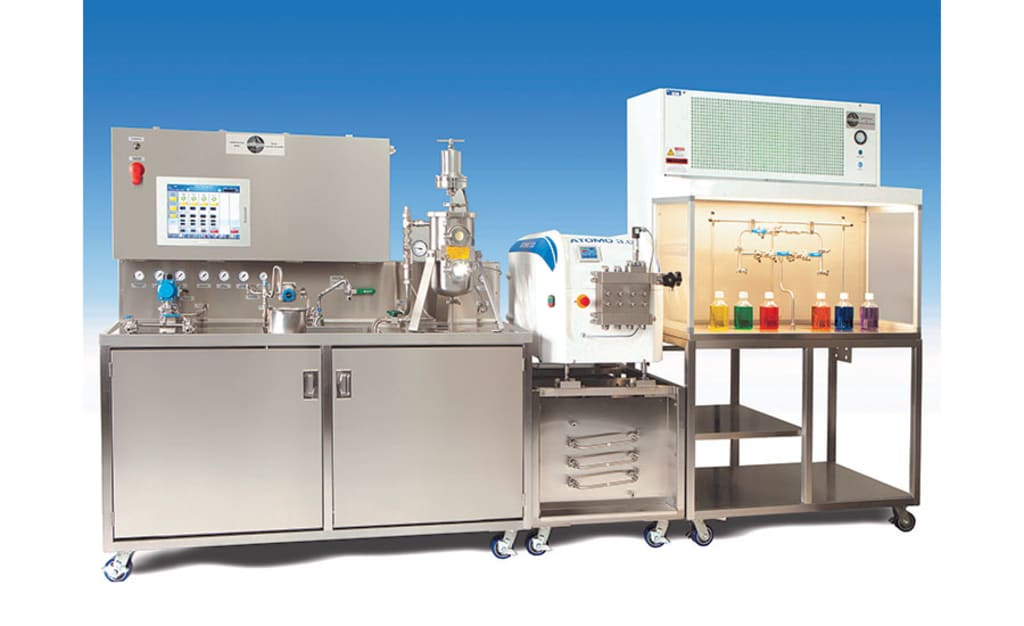Aseptic Processing Equipment
Aseptic Processing Equipment

In today's world, consumers demand safe, long-lasting food and pharmaceutical products. This is where aseptic processing equipment comes in. This specialized technology plays a vital role in ensuring the sterility of products like milk, juice, medications, and more. But how exactly does it work, and what are the different types of equipment involved?
Understanding Aseptic Processing
Aseptic processing is a technique that sterilizes both the product and the packaging in a controlled environment. This eliminates the need for preservatives and allows for extended shelf life without compromising quality. Here's a breakdown of the key steps:
Sterilization: The product undergoes a sterilization process, often using ultra-high-temperature (UHT) treatment or sterile filtration.
Aseptic Environment: The filling and sealing of the product occur in a sterile environment free of microorganisms. This environment is maintained through air filtration, controlled temperature, and specialized cleaning procedures.
Sterile Packaging: The packaging material itself is also sterilized before coming into contact with the product.
Benefits of Aseptic Processing Equipment
There are several advantages to using aseptic processing equipment:
Enhanced Food Safety: By eliminating the risk of contamination, aseptic processing ensures a safer product for consumers.
Extended Shelf Life: Products packaged aseptically can last for months without refrigeration, reducing spoilage and waste.
Preserves Quality: Aseptic processing minimizes heat exposure, which helps retain the product's natural flavor, texture, and nutrients.
Versatility: Aseptic processing can be used for a wide range of products, from beverages and dairy products to pharmaceuticals and biopharmaceuticals.
Types of Aseptic Processing Equipment
Aseptic processing relies on a variety of specialized equipment to achieve sterility throughout the process. Here's a look at some key components:
Sterilizers: These machines use heat, hydrogen peroxide, or a combination of both to eliminate microorganisms from the product. Common types include steam sterilizers, UHT sterilizers, and hydrogen peroxide vaporizers.
Aseptic Filling Machines: These machines fill pre-sterilized containers with the product in a sterile environment. Different types exist for various product forms, such as liquids, powders, and viscous materials.
Form-Fill-Seal (FFS) Machines: These machines create sterile containers from a roll of film, fill them with the product, and then seal them aseptically. This is a popular option for single-dose packaging.
Blow Molding Machines: These machines create pre-sterilized plastic bottles from molten plastic, suitable for larger volume products.
Aseptic Tanks and Silos: These large containers hold sterilized product under aseptic conditions before filling.
Environmental Monitoring Systems: These systems continuously monitor the sterile environment for any signs of contamination.
Choosing the Right Aseptic Processing Equipment
Selecting the appropriate aseptic processing equipment depends on several factors:
Product Type: The equipment needs to be compatible with the specific characteristics of your product, such as viscosity, acidity, and particle size.
Production Volume: The capacity of the equipment should match your production needs.
Packaging Requirements: The equipment should be able to handle your desired packaging format, such as bottles, cartons, or pouches.
Budget: Aseptic processing equipment can be a significant investment, so consider your budget constraints.
The Future of Aseptic Processing
Aseptic processing is a rapidly evolving field. Manufacturers are constantly developing new technologies to improve efficiency, reduce costs, and ensure even greater sterility. Some trends to watch include:
Aseptic Processing for Biologics: The use of aseptic processing is expanding in the biopharmaceutical industry for the production of sterile drugs and vaccines.
Aseptic Automation: Automation is playing an increasingly important role in aseptic processing, leading to improved consistency and reduced risk of human error.
Sustainable Aseptic Processing: Manufacturers are focusing on developing more energy-efficient and environmentally friendly aseptic processing methods.
By investing in aseptic processing equipment, food and pharmaceutical companies can ensure the safety and quality of their products while meeting consumer demand for longer shelf life and minimal preservatives. As the technology continues to advance, aseptic processing is poised to play an even greater role in the future of food and pharmaceutical production.
About the Creator
Enjoyed the story? Support the Creator.
Subscribe for free to receive all their stories in your feed. You could also pledge your support or give them a one-off tip, letting them know you appreciate their work.






Comments
There are no comments for this story
Be the first to respond and start the conversation.